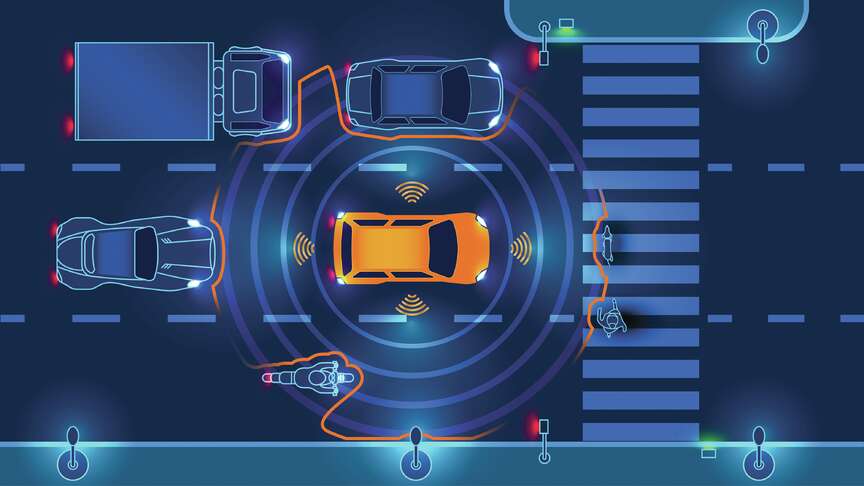Ensuring that your vehicle is in proper working condition is essential for your safety and the safety of others out on the road. A brake system failure or sudden tire blowout can lead to catastrophic consequences.
Be on the lookout for any dashboard warning lights or unusual noises, since that's your vehicle's primary way of signaling potential problems. With regular maintenance, your vehicle should provide years of comfort and dependability.
WATCH FOR SIGNS
Today's cars do a great job of warning owners about maintenance issues. Dashboard alerts serve as helpful indicators that something is not correctly functioning. Today's modern vehicles can be hooked up to a computer system that identifies problems based on these alerts. Your dealership, oil-change shop or repair personnel will typically provide a handy maintenance schedule. Closely following those dates will help keep you safe while lengthening the life of the vehicle.
At the same time, listen to what your car or truck is telling you. If you hear grinding or squeaky sounds when you apply your brakes, it's time to take your vehicle in for an inspection. Brake systems that aren't working properly pose a serious risk to you, your passengers and other drivers.
ON THE ROAD
Driving on worn-out tires poses a significant risk. Regularly inspect them using a tire depth gauge to ensure your vehicle is still safe for driving. The general recommendation is to replace tires when the tread depth reaches one-eighth of an inch. However, depending on the road conditions in your area, you may need to more frequently replace them. Always follow specifications provided by the vehicle manufacturer when replacing tires to avoid premature or uneven wear. Of course, purchasing a new set may be costly, but they tend to gradually wear down, allowing more time to plan for this cost.
IN THE GARAGE
Regularly check the condition of your bulbs, including headlamps, turn signals and brake lights. This may require assistance from another person, as you test both the high and low beams, hazard and reverse lights. Most faulty bulbs can be easily replaced at home. If you don't feel comfortable doing that, or find one in a difficult place to reach, consult a local mechanic.
The Latest Technology
These days, new vehicles are typically equipped with an advanced driver assistance system.
Abbreviated as "ADAS," its features include cameras, sensors and automated technology that help detect nearby vehicles, people or obstacles.
ADAS may also account for human errors, and even make the necessary corrections for you.
That may mean emergency corrections or even an almost autonomous driving experience. Here's more about the latest technology:
LANE DEPARTURE SYSTEMS
This feature uses sensors and cameras to help drivers remain in their own lane, unless a signal to turn or change lanes is engaged. Notifications follow if the vehicle detects a drift into another lane. In some cases, the system may automatically steer the car back toward the correct position on the roadway.
BLIND SPOT MONITORS
Cameras scan areas where drivers can't see, then send alerts like flashing lights, audible warnings, or wheel vibrations as obstacles are detected.
These monitors typically work in concert with automatic braking to prevent collisions. They're most helpful when changing lanes, but can be used in situations like parking, as well.
FORWARD COLLISION WARNING
This system tracks your distance and speed from surrounding objects. In the case of a potential collision, the driver will be immediately alerted – typically with loud verbal commands and brightly lit dashboard warnings. Emergency braking may be automatically engaged to prevent an accident.
REAR CROSS-TRAFFIC SENSORS
This feature is particularly helpful when backing up with limited visibility, as these sensors detect approaching vehicles while in reverse. When cross traffic approaches, an alert sounds. The braking system may be activated to prevent a collision if drivers don't react promptly enough.
DRIVER MONITORING SYSTEM
ADAS can be used to analyze driver behavior. Steering movements, lane changes and speed may be signs of fatigue, inattention or impairment. Many systems will issue a dashboard alert, while others provide loud spoken warnings and even vibrate the seat.
WORD OF WARNING
Simple car repairs may be complicated by ADAS, particularly when making replacements. Cameras and sensors may lose functionality or require recalibration if you've been in an accident or need a new windshield. Consult with your car dealer or an expert on these systems before moving forward.

